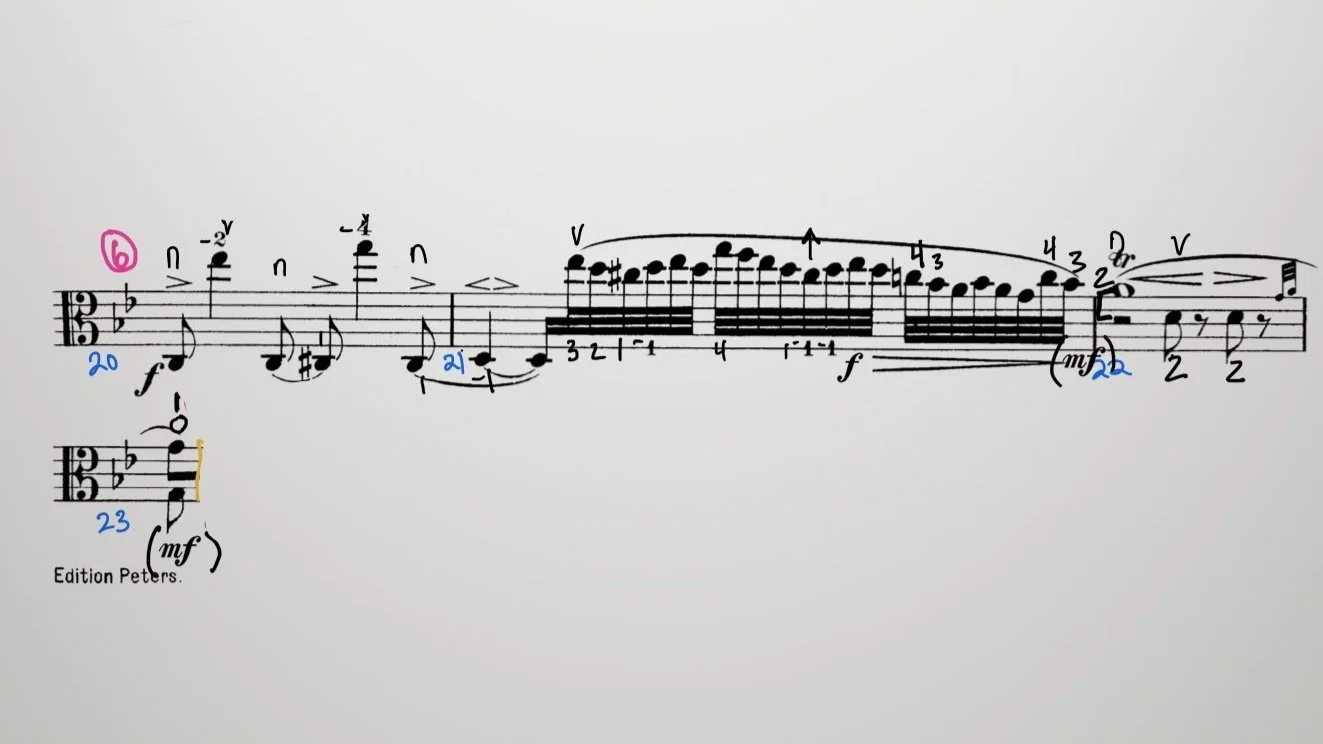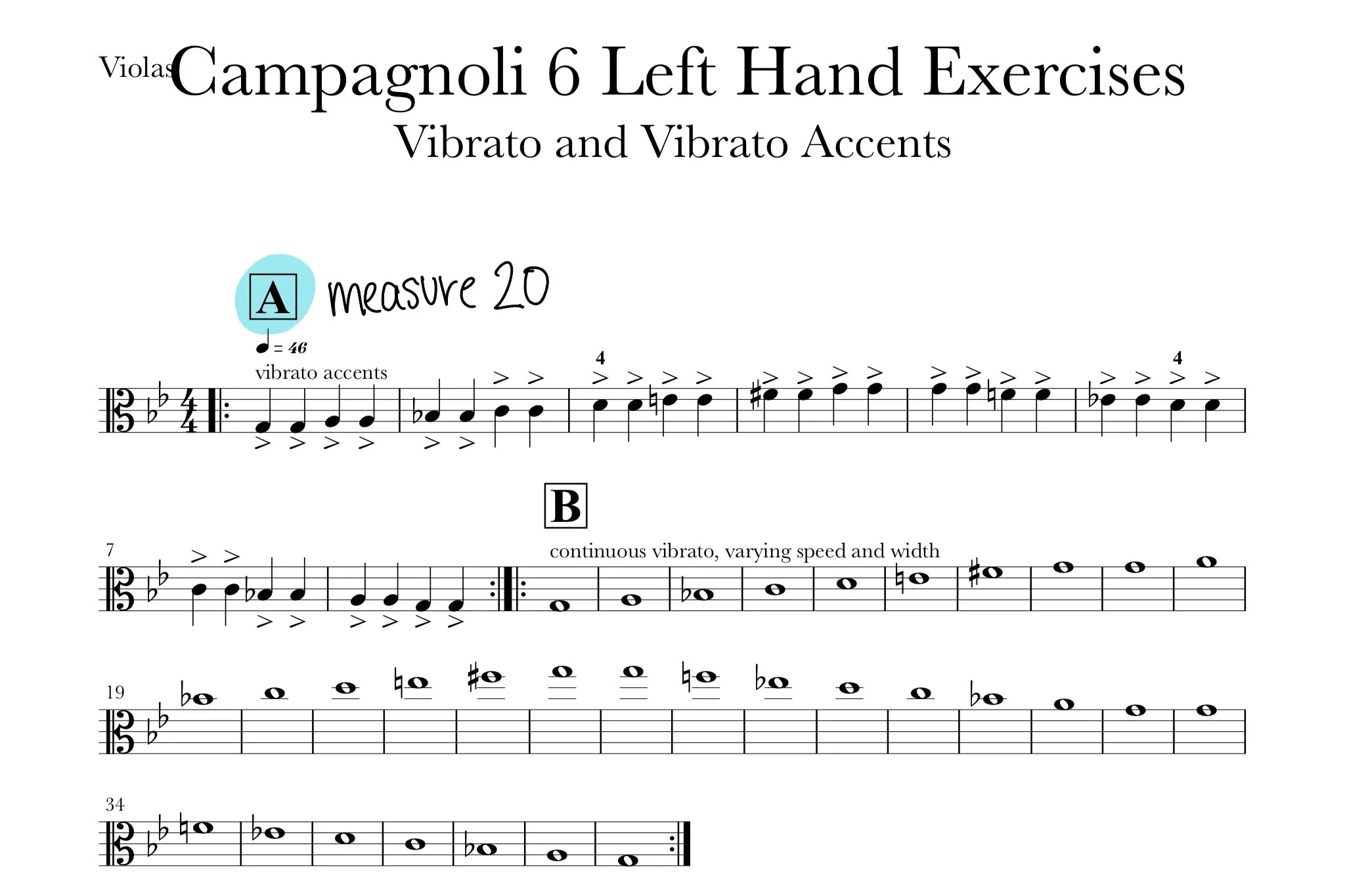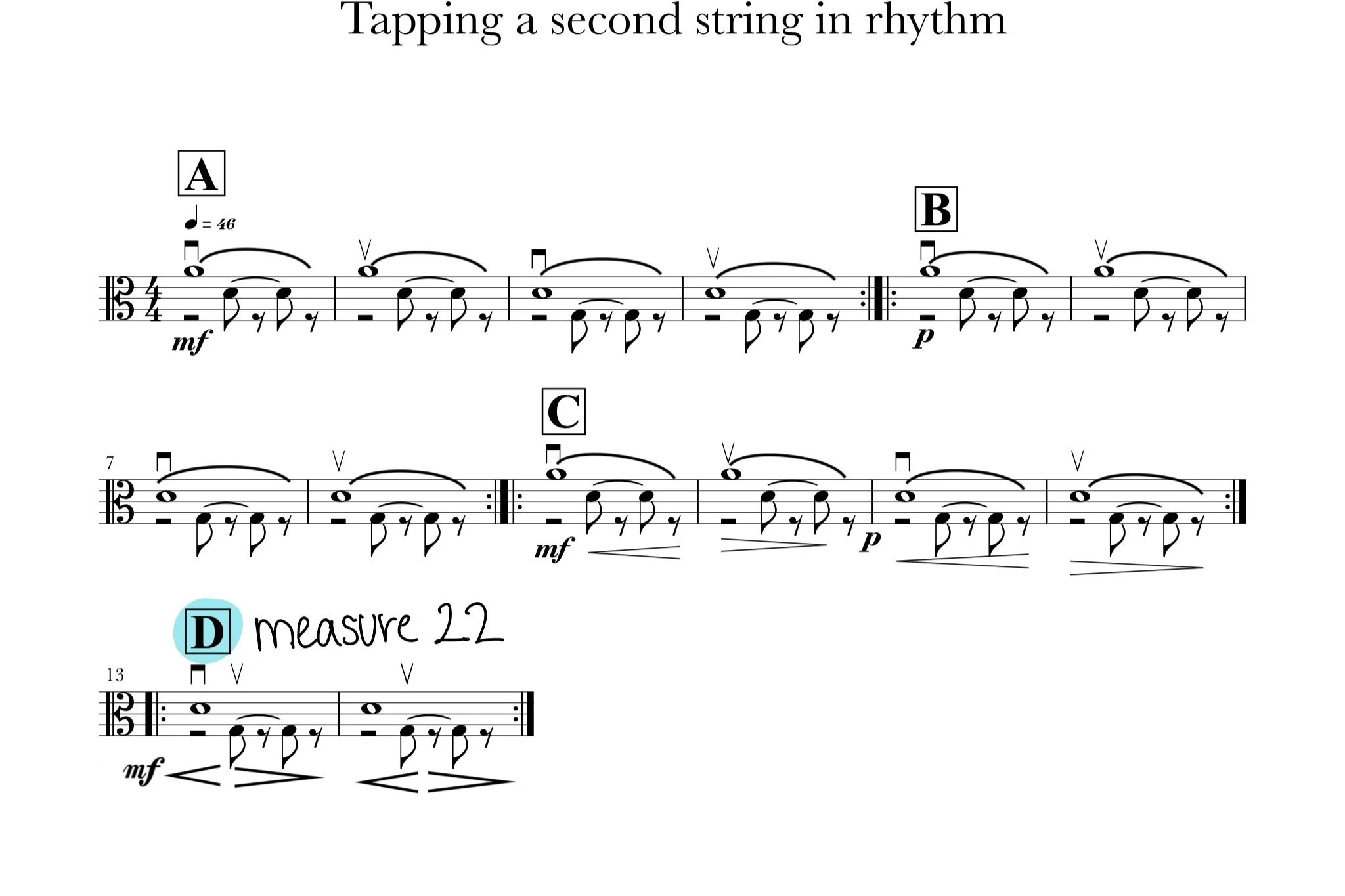IN THIS LESSON
PHRASE 6 -
MEASURE 20-23
Phrase 6 marks the dramatic peak of the etude. Fortes and accents should be played with lots of bow and active vibrato. Maintain the momentum and energy throughout, especially in the lower register.
Phase 1 of Practice:
Focus on bow subdivisions in Measure 21, playing 32nd notes to master the transition from the sustained D with a hairpin swell into the subsequent active notes.
Begin without the printed slurs, practicing separate bows while mastering the left-hand pitches.
Explore the expressive impact of vibrato within the phrase.
Phase 2 of Practice:
Play the printed rhythm as written, integrating the specified bowings into your practice.
General Practice Strategies:
Maintain a fundamentally loud and bold expression throughout this phrase despite dynamic changes.
Remember, harmonic tension does not mean physical tension! Ensure relaxation in your bow arm and fingers despite the harmonic tension in the music.
Maintain vibrato throughout to enhance the character and the sustained melodic line.
Place fingers with energy for the accents. Focus on dropping and lifting your third finger for the trill rather than using vibrato or wrist movements to mimic the effect.
Anticipate left-hand finger placement early in Measure 22 for the double-stop notes before executing string tapping with the bow.
Given the energetic nature of this phrase, employ an active vibrato — somewhat faster and narrower.
Practice subdividing bow strokes for rhythmic accuracy, utilizing a 32nd-note subdivision where applicable.
Breaking Down the Phrase & Reference Guide to Previous Exercises:
Measure 20:
Reference the Vibrato Accents exercise. Drop fingers with energy, add a burst of fast, wide vibrato at accents, and scoop/pull the bow with increased speed and depth.
Coordinate bow movement from C string to A string level using the bow elbow.
Also, practice shifting during these string crossings.
After beat 3, shift to third position for the G with 4th finger.
Measure 21:
The swell on D can be played by manipulating bow speed/weight, and with speeding then slowing the vibrato.
The 32nd notes begin with 3rd finger in second position - shift to the anchor note of 2nd finger D, framing the hand around this note.
With a 1-1 shift on C# to D, arrive to in 3rd position and remain in 3rd position for the rest of the 32nd notes. (The second C# is played as one more 1-1-1 backwards extension.)
Remain in third position, crossing to D string in beat 4.
Measure 22:
Reference the Tapping a Second String exercise, Measure 13 (this version includes the swell). TMEA's correction suggests playing this measure with 2 beats down bow, crescendoing and trilling, transitioning to an up bow on beat 3 and slurring into Measure 23.
Use 2nd finger to cover both G and D strings in third position. Aim to place the finger on both strings initially; adjust if necessary during the bow change.
Measure 23:
The G octaves on the downbeat remain in third position.
Slur up to the downbeat from an up bow in Measure 22.



